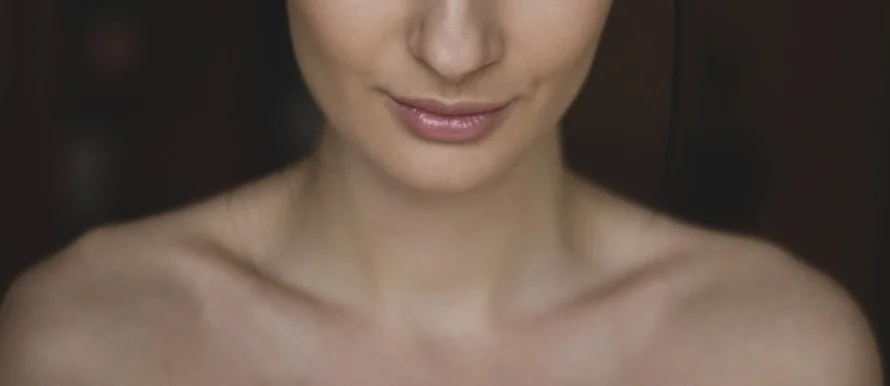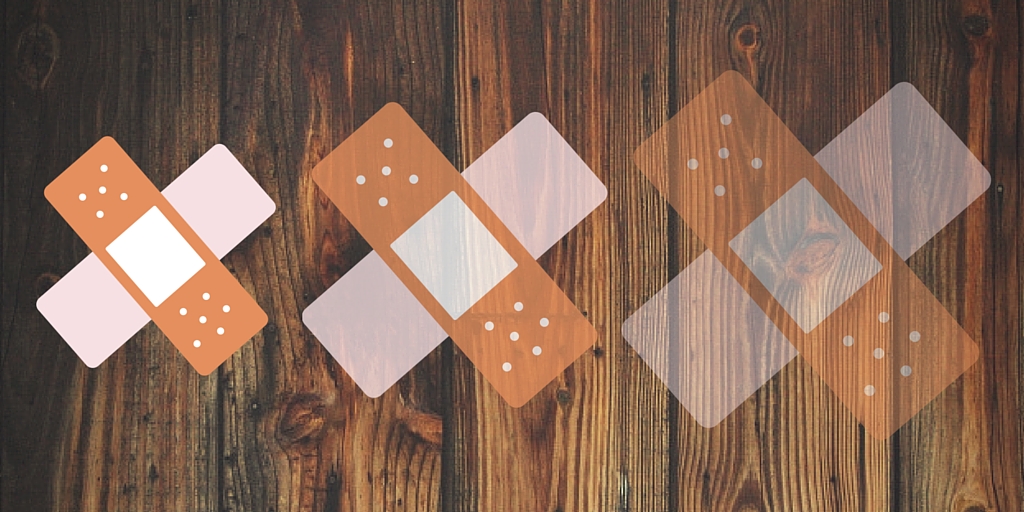If you’ve seen popular pharmacy commercials, you may have asked yourself what eczema is. Over 30 million American suffer from eczema, including children, men and women. Children commonly develop eczema on their face and all over the body. Eczema is itchy and produces red inflamed skin almost anywhere on the body. It can appear on the arms, legs, face, or stomach. Often it is embarrassing and annoying for those that have it. Continue reading article>
Why Scars Vary in Size and Appearance and How to Treat Them
Have you ever received a scar from a surgery, car accident or a nasty fall? You’re not alone. Each year, 200 million incisions are completed worldwide, and around 170,000 scar revisions are performed in the United States. Have you ever wondered how you might treat surgical scars or why people scar differently?
A scar is initially a result of the skin’s healing process. After the skin or tissue has been wounded, your body will release collagen to aid in the healing process. The degree to which someone’s skin will scar depends on many factors. The primary component that affects scarring is the size and depth of a wound. Age is also a vital factor in the process of scarring. Scars will typically heal better in younger individuals and they will produce a thicker blemish than on the skin of an older person. It is also important to take into consideration the skin tone of an individual. People with lighter complexions tend to receive hypertrophic scars, while Asians and African American individuals are likely to have keloid scars.
Hypertrophic scars typically possess excessive amounts of collagen, which gives them a height and thickness. Similar to hypertrophic scars, the keloid is a raised scar that is caused from an overgrowth of scar tissue. While scarring is often a natural process of the body’s healing system, scars are often the result an over-active healing of the body.
Learn more about scar healing techniques and treatments from our dermatological and scar heal patient resources.
How can you get rid of these different kinds of scars?
Initially, scars can be like defiant old bugs that simply won’t go away. However, natural scar treatments like lemon juice, ice cubes and honey can be an effective means to healing your scar. Try not to drink all of the tasty lemon juice though, ok? This is likely to be your most difficult aspect in cleansing your abrasive epidermis. First, cut a fresh lemon in half and rub the juicy part all over your scars. Can you feel your scar fading in the blink of an eye?
Probably not!
You will unlikely feel any tingle, burn or eyewitness the scar disappearing simultaneously as you rub the lemon on your scar. Nonetheless, the lemon will operate as a natural bleach to reduce your scar. You can also consume the lemon juice (without sugar) for 15 days, and this can help in the healing process. Ice cubes and honey can also help to fade your scars, just take an ice cube or honey and gently rub them on your incisions daily, and voila!
Some more formal technical treatments for scar care include Z-plasty, Shave and Fusiform excision. I know, these names sound funky, but they can heal your scar, so listen up! Z-plasty is one of the most versatile scar revision techniques available according to emedicine.medscape.com. Z-plasty can effectively reorient a scar to rest in a more favorable position, break up the length of the scar, or increase the scar’s length to reduce its visibility. Shave and Fusiform excision also provide similar results.
Written By: Preston Copeland
Home Remedies for Scar Reduction
Dealing with acne scars and surgical scars is no fun. Going to the doctor’s office to get treatment for scars is even less fun! In the midst of our busy schedules, scar treatment may not be a top priority on our to-do list, despite how annoying it may be to see them everyday. Not to mention, getting prescription creams and medicine for scars can end up being very expensive.
Luckily, there are still other solutions for scar reduction and treatment; home remedies. They’re the perfect fix for acne scars because they’re easily accessible, easy to apply, inexpensive, and effective. Here are ten of the most popular home remedies for acne scars and healthier skin:
1. Coconut Oil
Coconut oil is one of the best natural gifts on earth. It can be used in a multitude of ways for health, cooking, and skin—including scar fading. By applying coconut oil directly to an acne scar or surgical scar daily, the fatty acids within it will prevent and reverse free radical damage to heal and nourish the skin. It’s a wonderful moisturizer for dry skin too.
2. Lemon Juice
Because lemon juice is a natural bleaching agent, it works great to reduce the appearance of scars. Applying it directly to the scar is most effective, but drinking it also leads to many dermatological benefits! Be sure not to apply to open wounds though, because it’ll sting.
3. Aloe Vera
Commonly used to treat sunburn, aloe vera’s healing powers are used to soothe inflammation while simultaneously regenerating damaged tissue. Apply the sap from the actual plant, or the gel form, daily and don’t wash it off so it can soak in as deep as possible.
4. Vitamin E
Vitamin E comes in the form of oils and capsules—either of which work as a go-to scar home remedy. Vitamin E works by stimulating the formation of collagen which is the main tissue in skin. This leads to stronger, smoother skin.
5. Essential Oils (Lavender and Tea Tree Oils)
Both of these oils are used to rejuvenate skin cells and also reduce the appearance of scar tissue. Massage them into the skin for 20-30 minutes then gently rinse the area. If it burns, try diluting it with a base oil or using a smaller amount.
Don’t forget to ask your dermatologist if they know of any acne scars home remedies or other less aggressive over the counter options!
6. Cocoa or Shea Butter
This home remedy is especially popular for reducing stretch marks, but can also be used for other types of scars. It works by soothing, hydrating, and softening the scar tissue so that it can heal better and faster.
7. Apple Cider Vinegar
Apple cider vinegar helps to fade the appearance of scars by reducing the pH of the inflamed or damaged area. It can be directly applied to the skin with a cotton ball or it can be diluted (1 part apple cider vinegar, 2 parts water) and used as a face wash! Make sure to apply moisturizer afterwards to keep the skin from drying out.
8. Honey
Applying fresh and natural honey to an acne or surgical scar to nourish the skin, improve blood circulation and keep dead cells from accumulating. Let the honey dry, then wash or rinse the skin gently with cold water.
9. Baking Soda + Hydrogen Peroxide
To make a paste that speeds up the scar healing process and smooths skin, mix 1 part baking soda and 3 parts hydrogen peroxide. Apply directly and then rinse. Moisturize after this as well to prevent drying out your skin.
10. A Balanced Diet
One of the most important home remedies to help improve the overall quality of your skin is to eat healthy. The more fruits and veggies in your system, the more benefits you will see. Another huge tip for better skin and fewer scars: water, water, water! Stay hydrated internally so that your skin can be hydrated externally.
The key to these home scar remedies is to be patient. The more they’re applied, the better the results will be, but they usually take a few weeks to really show their power! Pick a few of these and try them out!
Written by: Jordan Rawlinson
3 Reasons Scars Are Like Snowflakes
In a society where perfect, blemishless appearances seem to be everything, surgical scars and severe acne scars can really rain on your confidence parade and affect your social media selfie game. Scars may be imperfect, but believe it or not, they’re a lot like the beautiful snowflakes we admire in the winter. You may be wondering, “How can these two seemingly polar opposites be similar?” How can you find a way to look at your severe acne scars and surgical scars and find beauty in them?
Feel free to listen to the Frozen Soundtrack while reading this post!
Here are three reasons how scars are like snowflakes:
1. Each one is unique.
It’s been said that no two snowflakes are identical and the same goes for scars. Each one varies in shape, size, and color. They can be found on people all over the world and can result from a myriad of causes. Even if two people underwent the same procedure and ended up with similar surgical scars, on the microscopic level they’d still be unique (much like snowflakes) because everyone has different skin. So whether it’s a cluster of ice crystals or fibrous tissue, what we’ve heard is true: no two are the same!
2. They’re symbolic.
Snowflakes are well known and easily recognizable representations of the cold and winter. They’re used on ice packs, A/C units, and holiday wrapping paper amongst many other things. Scars can hold similar symbolism. Most of the time, they either represent a previous condition, recovery, or experience. You may be tired of hearing, “How’d you get that scar?”, but it’s because others are eager to learn about the story behind the symbol.
3. Over time, they fade (or melt) away.
Although snowflakes melt much faster than scars heal, it’s still true that eventually they both fade and can possibly disappear. Whether it be through prescription usage or at-home remedies; scar care can be managed with a multitude of treatment options that cause the scar tissue to heal and fade over time.
Perhaps much to your surprise, scars and snowflakes aren’t so different after all! In the midst of trying to maintain perfection (especially in scar and skin care) it’s reassuring to know our imperfections can be likened to beautiful and treasured entities like snowflakes.
Guest Post Written By: Jordan Rawlinson









